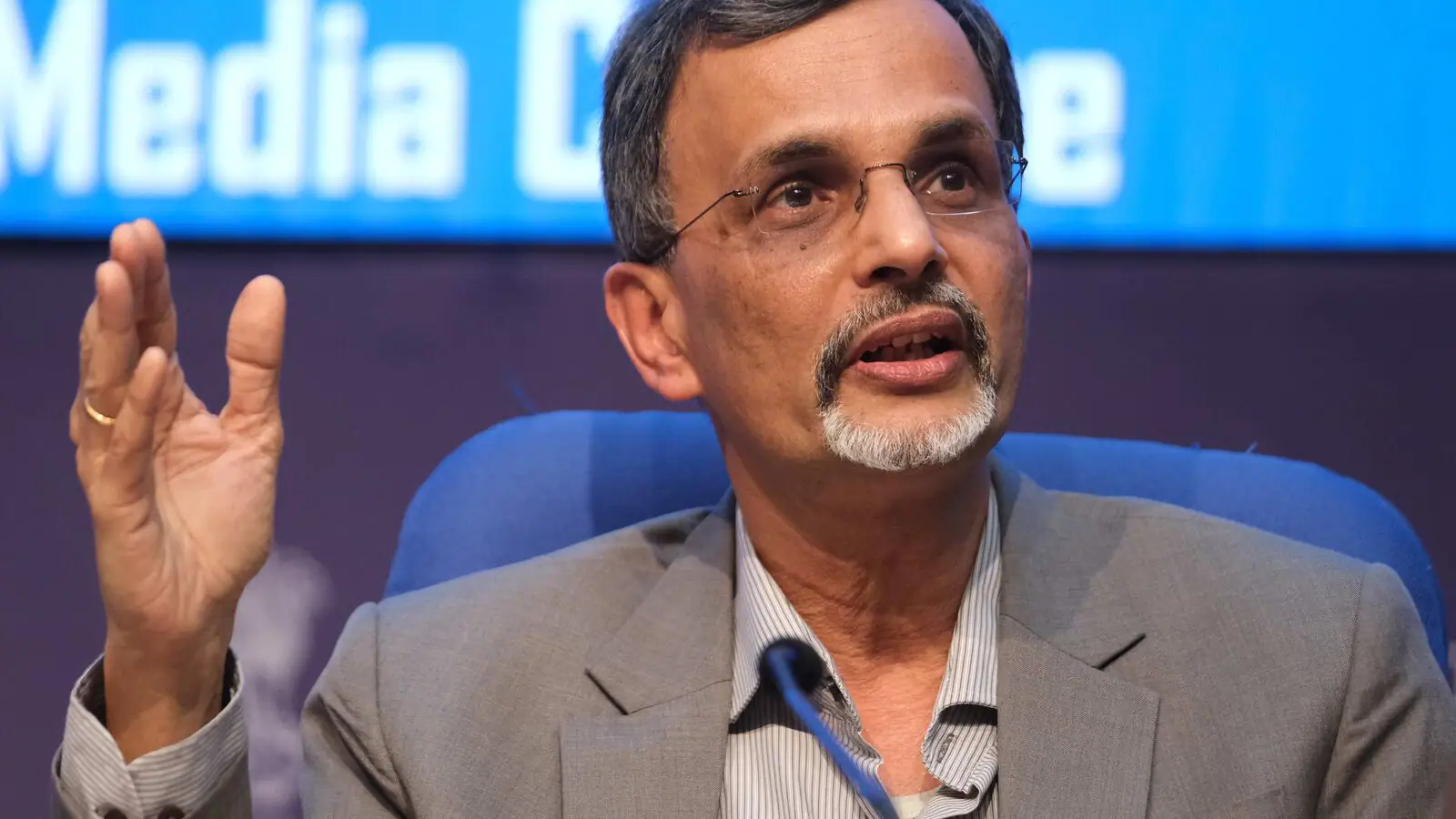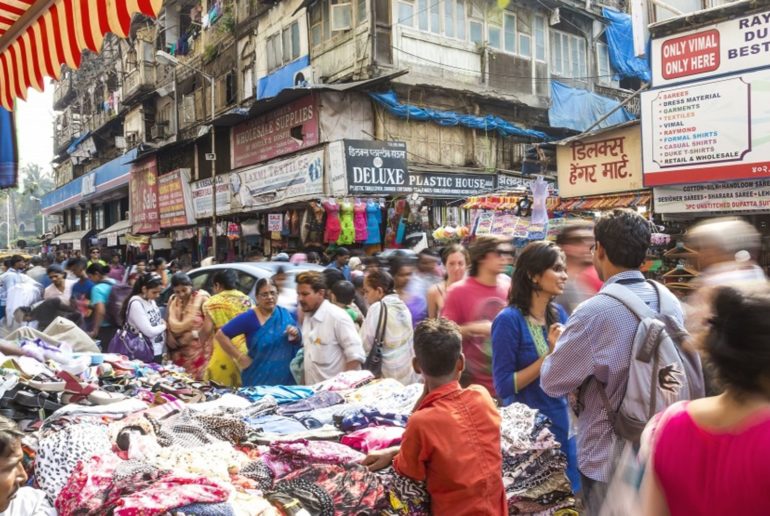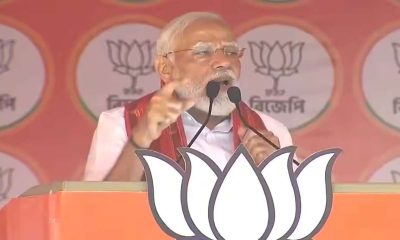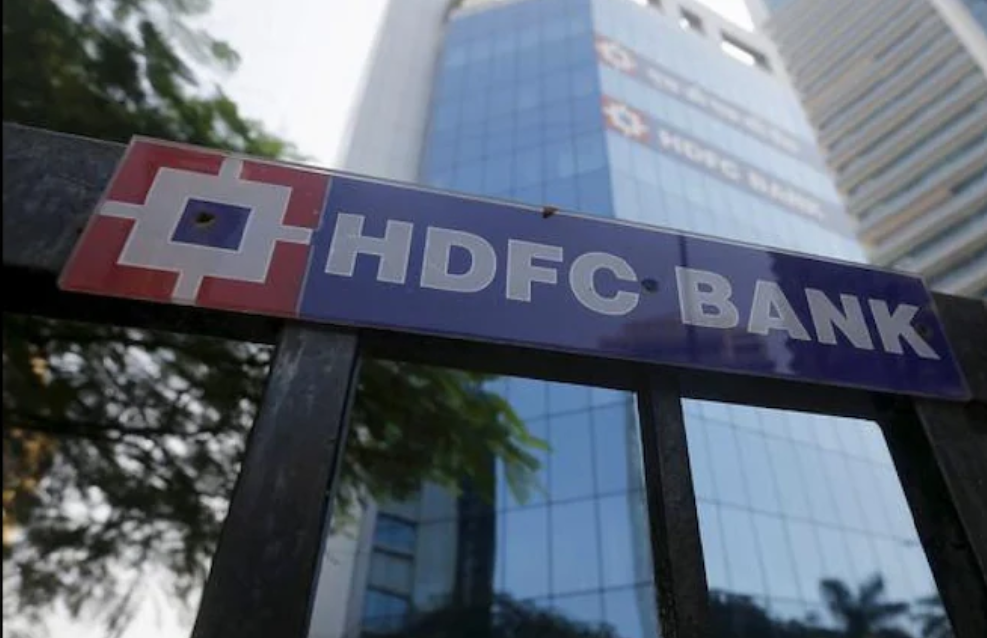Economy news
Paytm shares continue to fall after weak market debut, down nearly 18%, analysts expect further decline
The stock fell more than 10% on Monday after the company made a weak market debut on Thursday. The Paytm shares were listed on Thursday at Rs 1,950, a discount of 9.3% to its IPO price of Rs 2,150, and closed at Rs 1,564.15, down 27%.

Shares of India’s pioneering digital payments platform Paytm continued to decline for the second day in a row on Monday, tumbling nearly 14%. Shares fell as much as 17.97% on their second day of trading.
The stock fell more than 10% on Monday after the company made a weak market debut on Thursday. The Paytm shares were listed on Thursday at Rs 1,950, a discount of 9.3% to its IPO price of Rs 2,150, and closed at Rs 1,564.15, down 27%.
As per the majority of analysts, the shares of One97 Communications, the parent company of Paytm, could decline further this week after a weak market debut on Thursday. After a continuous decline in its share, Paytm’s IPO valuations have been a major concern for several analysts and investors.
Nearly 30% fell in Paytm shares from the IPO price affected individual investors and global institutions such as BlackRock Inc. and the Canada Pension Plan Investment Board that had scooped up shares.
The Paytm IPO with an issue size above Rs 1,000 crore saw the biggest crash on a listing day in the last 15 years of corporate history.
Read Also: LIVE Top News Today: All party meet ahead of Parliament session on Nov 28, PM likely to attend
The counter continued to bear a deserted look as the stock declined 13.66% to Rs 1,350.35 on BSE. On NSE, it tumbled 13.39% to Rs 1,351.75.
Ant Group-backed Paytm’s Rs 18,300 crore IPO, India’s biggest share sale, was oversubscribed 1.89 times earlier this month. This was greater than miner Coal India’s Rs 15,000 crore offer a decade back.
Incorporated in 2000, One97 Communications is India’s leading digital ecosystem for consumers and merchants.
The company sought a valuation of $20 billion through the public offer which is more than that of several Indian blue-chip companies.
Paytm had fixed its IPO in a price band of Rs 2,080-2,150 per share.
Economy news
Financial changes effective from September, Aadhaar update, nomination deadline for demat account
Some changes will take effect on the first day, while others will be implemented later in the month. This list will affect people’s finances.

In the month of September, there are many changes occurring, particularly in the financial sector. Some changes will take effect on the first day, while others will be implemented later in the month. This list will affect people’s finances.
The deadline to update an individual’s Aadhaar card details for free is quickly approaching. The Unique Identification Authority of India (UIDAI) extended the deadline from June 14 to September 14, 2023. This scheme is specifically for citizens who obtained their Aadhaar card 10 years ago and have yet to update their information. People can take this opportunity to update their details before it’s too late.
The nomination process for trading and demat accounts is mandatory for holders and the deadline for this has been extended by the Security and Exchange Board of India (SEBI). The account holders have to make nominations or opt out of it before September 30.
People will need to update and link of Aadhaar identity documents with PAN cards. Those who have credit cards from Axis Bank will also experience the effects of these changes starting this month.
As per the updated terms and conditions, Axis Bank’s Magnus credit card users need to pay higher fees. The annual fee has been increased to Rs 12,500. Also, the benefits associated with the card will be updated.
This month marks the final opportunity for individuals to exchange Rs 2,000 notes. As stated by the Reserve Bank of India (RBI) in May, individuals may exchange or deposit these notes into their bank accounts before the specified deadline.
The central bank has specified that individuals may exchange or deposit for lower denomination notes, up to Rs 20,000 at a time, until September 30th. Interestingly, even after the deadline, Rs 2,000 notes will still be considered valid tender.
Starting from the current financial year, the Ministry of Finance has made it mandatory to provide both Permanent Account Number (PAN) and Aadhaar card information when making investments in small saving schemes such as the Public Provident Fund (PPF), Post Office Saving Scheme, and Senior Citizens Saving Scheme (SCSS). Existing subscribers must submit their Aadhaar number before September 30th, or their accounts will be frozen.
Economy news
India will remain on similar growth curve till 2030, expect well behaved inflation this fiscal: CEA
Chief Economic Adviser (CEA) V Anantha Nageswaran on Tuesday projected that India’s economy was poised to do better and expected to grow at 6.5-7 percent till the end of the decade.

Chief Economic Adviser (CEA) V Anantha Nageswaran on Tuesday projected that India’s economy was poised to do better and expected to grow at 6.5-7 percent till the end of the decade.
Nageswaran, while talking to the media after tabling of the Economic Survey in Parliament by Finance Minister Nirmala Sitharaman, said that the inflation is likely to be “well behaved” in the coming fiscal year barring any unforeseen factors.
According to the Economic Survey prepared by the CEA, RBI projection of retail inflation at 6.8 per cent in the current fiscal is neither too high to deter private consumption, nor too low as to weaken inducement to invest.
The Economic Survey for the current fiscal also state that the Indian economy is expected to hit a minor slow down to 6.5 percent in April 2023 but will continue to remain the fastest-growing major economy in the world owing to its ability to better deal with challenges faced by the global economy.
The CEA maintained that the projected growth rate would remain stable as long as oil prices stayed below 100 dollars per barrel. He also pointed out that the quality of public expenditure has gone up and the government has become more transparent with budget deficit numbers, adding that an increased transparency is being witnessed in public procurement.
Read Also: Finance Minister Nirmala Sitharaman tables Economic Survey 2023, check highlights here
Nageswaran stressed that credit growth is picking up across sectors, and credit to MSMEs has grown at 30 per cent since January 2022, while NPAs in NBFCs is lower than what it was 15 months ago.
The CEA revealed that India is well ahead of its targets for renewable energy mix.
Earlier on Tuesday, the International Monetary Fund in its January update of the World Economic Outlook called India as a bright spot in an otherwise gloomy world economy which, together with China, will account for half of the global growth in 2023, compared to the US and Euro area, who account for just a 10th of the world’s growth.
The IMF report had made almost similar projections to the Economic Survey tabled by the government. It has projected India’s growth to dip slightly from 6.1 percent to 6.8 percent during the current fiscal year ending on March 31. IMF also expects some minor slowdown in the Indian economy in the next fiscal year.
Air India Pee Gate: Delhi court grants bail to accused Shankar Mishra
Visakhapatnam to be the new capital of Andhra Pradesh, says CM Y S Jagan Mohan Reddy
Economy news
India a bright spot amid projected decline in global growth: IMF
The International Monetary Fund (IMF) has projected India’s growth to dip slightly from 6.1 percent to 6.8 percent during the current fiscal year ending on March 31. IMF also expects some minor slowdown in the Indian economy in the next fiscal year.

The International Monetary Fund (IMF) has projected India’s growth to dip slightly from 6.1 percent to 6.8 percent during the current fiscal year ending on March 31. IMF also expects some minor slowdown in the Indian economy in the next fiscal year.
According to the January update of the World Economic Outlook released by global fiscal body on Tuesday, global growth is projected to fall from a projected 3.4 percent in 2022 to 2.9 percent in 2023, then rise to 3.1 percent in 2024.
Pierre-Olivier Gourinchas, Chief Economist and Director, Research Department of the IMF said in a statement that the IMF’s projections for India remain unchanged from its October update as they predict a 6.8 percent growth curve for the Indian economy for the current fiscal and an expected minor dip to 6.1 percent in the next fiscal.
According to the IMF World Economic Outlook, the slowdown is largely driven by external factors, adding that the India’s growth will once again see an upward curve and go up to 6.8 percent in 2024 due to resilient domestic demand despite external factors.
The report expects a rise in growth in developing Asian nations in 2023 and 2024 to 5.3 percent and 5.2 percent, respectively, after the slowdown in 2022 to 4.3 percent.
For the first time in the last four decades, China’s growth fell below the global average in the fourth quarter of 2022 which saw a 0.2 percentage point downgrade, settling at 3.0 percent. However, China’s growth is expected to rise to 5.2 percent in 2023 and fall to 4.5 percent in 2024 before settling at below 4 percent over the medium term amid declining business dynamism and slow progress on structural reforms.
Read Also: Railways cancel over 350 trains, divert route of 16 trains, check full list here
Gourinchas pointed out that emerging market economies and developing economies are already on the way up and have seen a slight rise in growth for the region from 3.9 percent in 2022 to 4 percent in 2023.
He stressed that India and China combined account for almost 50 percent of world growth in 2023, adding that IMF’s positive view on India’s growth curve remains unchanged.
Gourinchas in a blog post termed India as a bright spot which, together with China, will account for half of the global growth in 2023, compared to the US and Euro area, who account for just a 10th of the world’s growth.
Gourinchas also forecasted a much more pronounced slowdown for advanced economies with a decline from 2.7 percent last year to 1.2 percent and 1.4 percent this year and next.
Nine out of 10 advanced economies will likely decelerate, he added.
He predicted that the US’ growth will slow to 1.4 percent in 2023 as Federal Reserve interest-rate hikes work their way through the economy. Euro area conditions are more challenging despite signs of resilience to the energy crisis, a mild winter, and generous fiscal support, he said.
Haryana man killed in road mishap, police say; family claims beaten to death by cow vigilantes
Peshawar suicide bombing: Death toll rises to 83, over 150 wounded
-

 Cricket news20 hours ago
Cricket news20 hours agoIPL 2024: Yashasvi Jaiswal hits brilliant century to help Rajasthan Royals beat Mumbai Indians by 9 wickets
-

 2024 Lok Sabha Elections18 hours ago
2024 Lok Sabha Elections18 hours agoNCP (SP) leader Sharad Pawar says Prime Minister Narendra Modi is trying to create fear like Russian President Vladimir Putin
-

 Entertainment18 hours ago
Entertainment18 hours agoMithun Chakraborty, Usha Uthup honoured with Padma Bhushan
-

 Entertainment16 hours ago
Entertainment16 hours agoFan jumps on stage and hugs Atif Aslam during concert, video goes viral
-

 2024 Lok Sabha Elections18 hours ago
2024 Lok Sabha Elections18 hours agoPrime Minister Narendra Modi says listening to Hanuman Chalisa under Congress rule is a crime
-

 Entertainment14 hours ago
Entertainment14 hours agoManisha Koirala reveals reason for rejecting Dil To Pagal Hai, says regrets that decision
-

 2024 Lok Sabha Elections12 hours ago
2024 Lok Sabha Elections12 hours agoPM Modi says Congress leaders consider themselves above Lord Ram
-

 India News20 hours ago
India News20 hours agoArvind Kejriwal given insulin in Tihar jail after sugar levels touch 320













